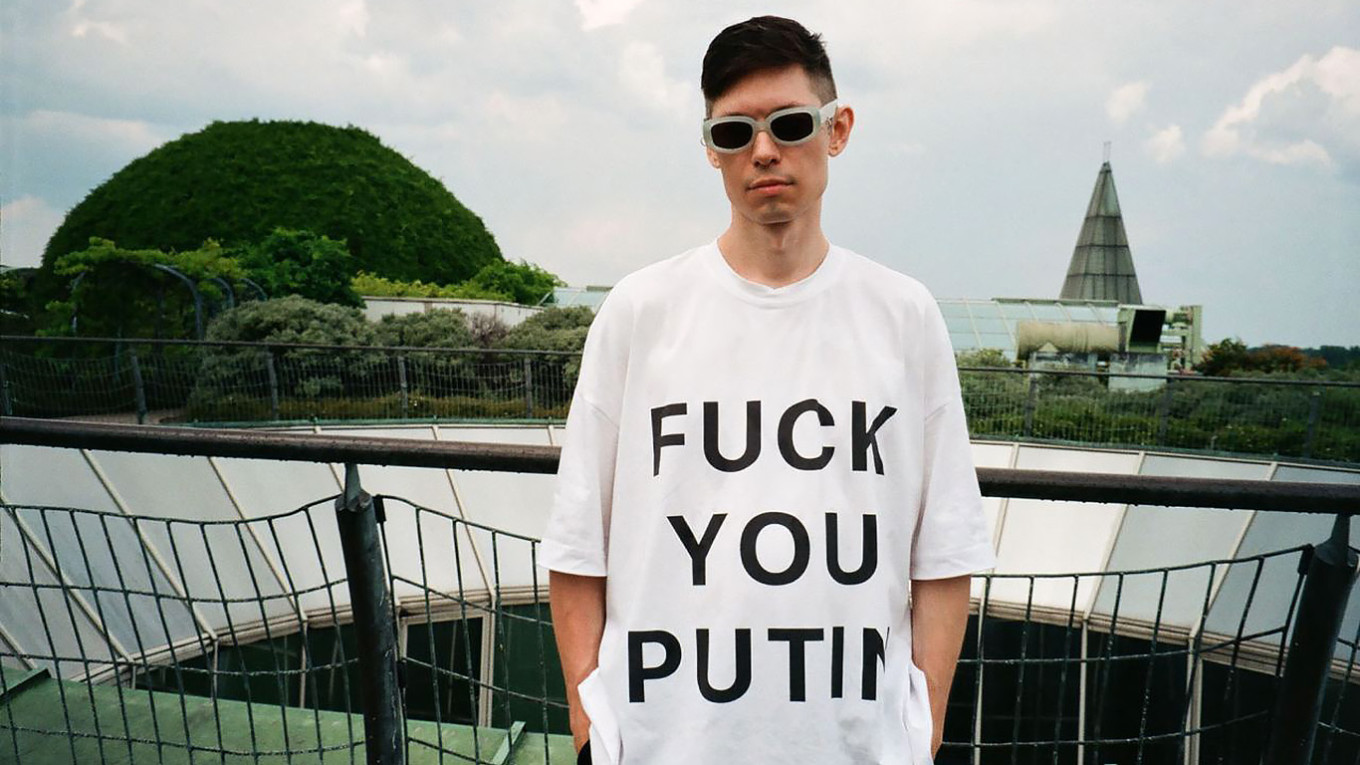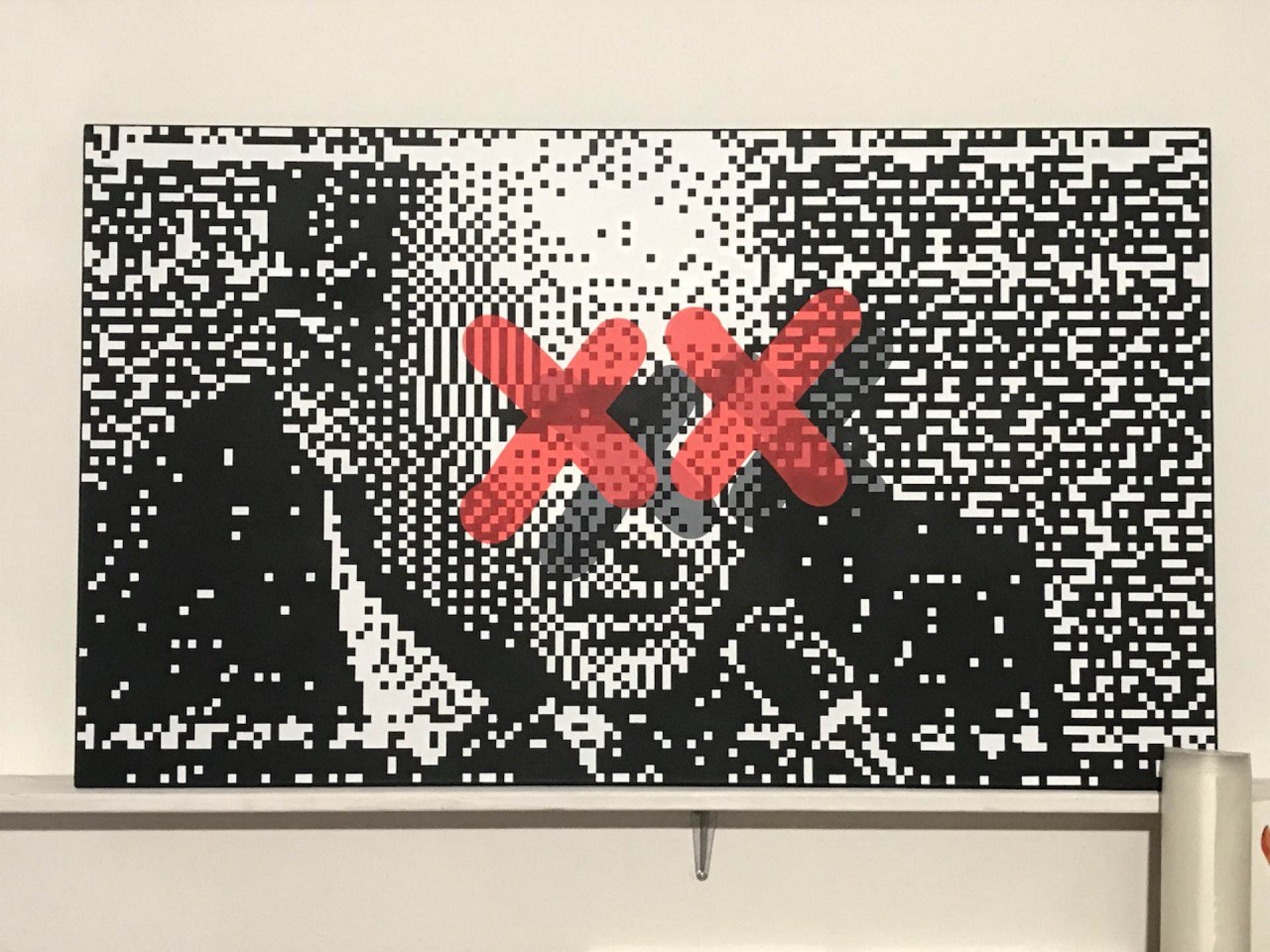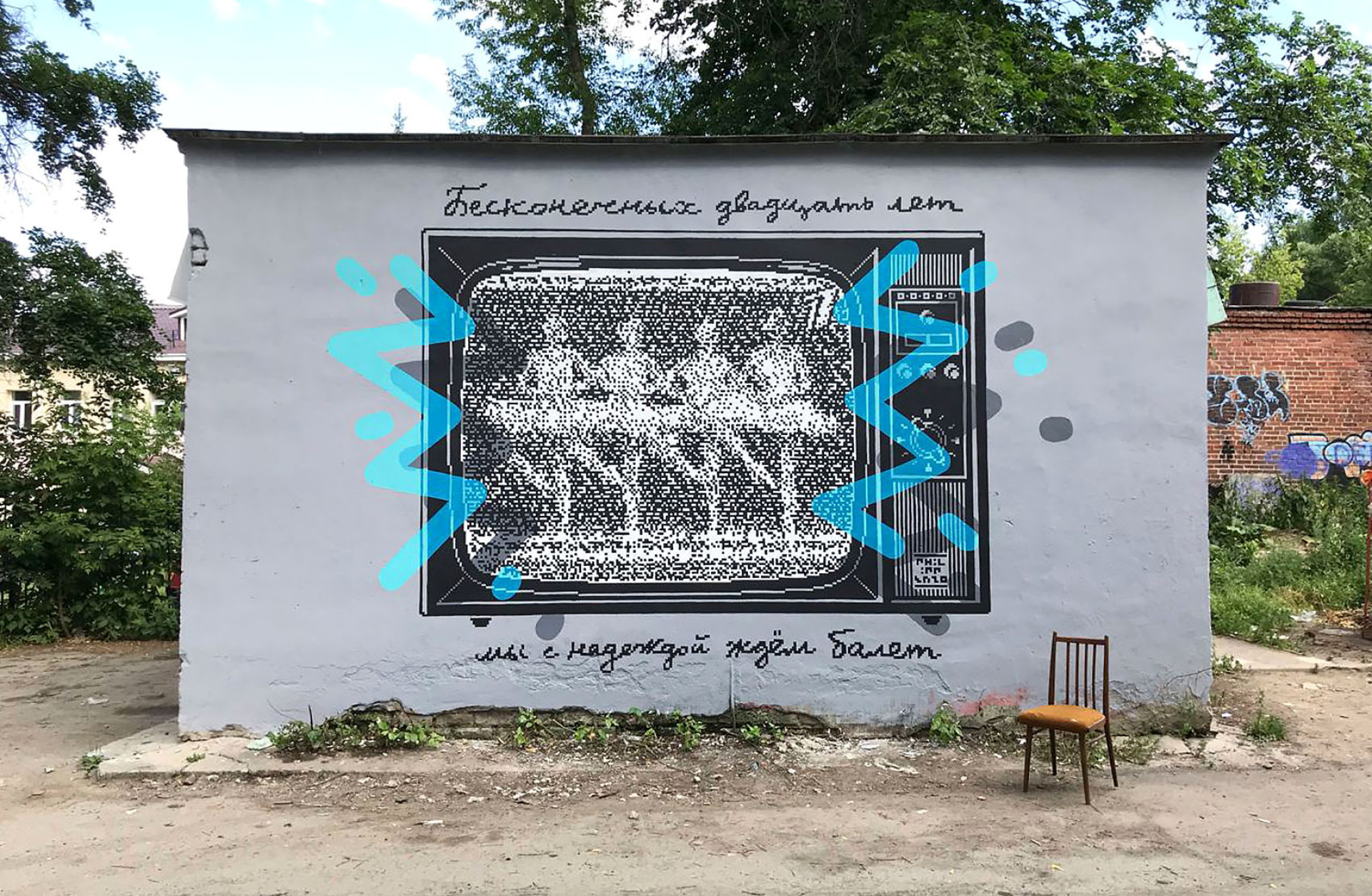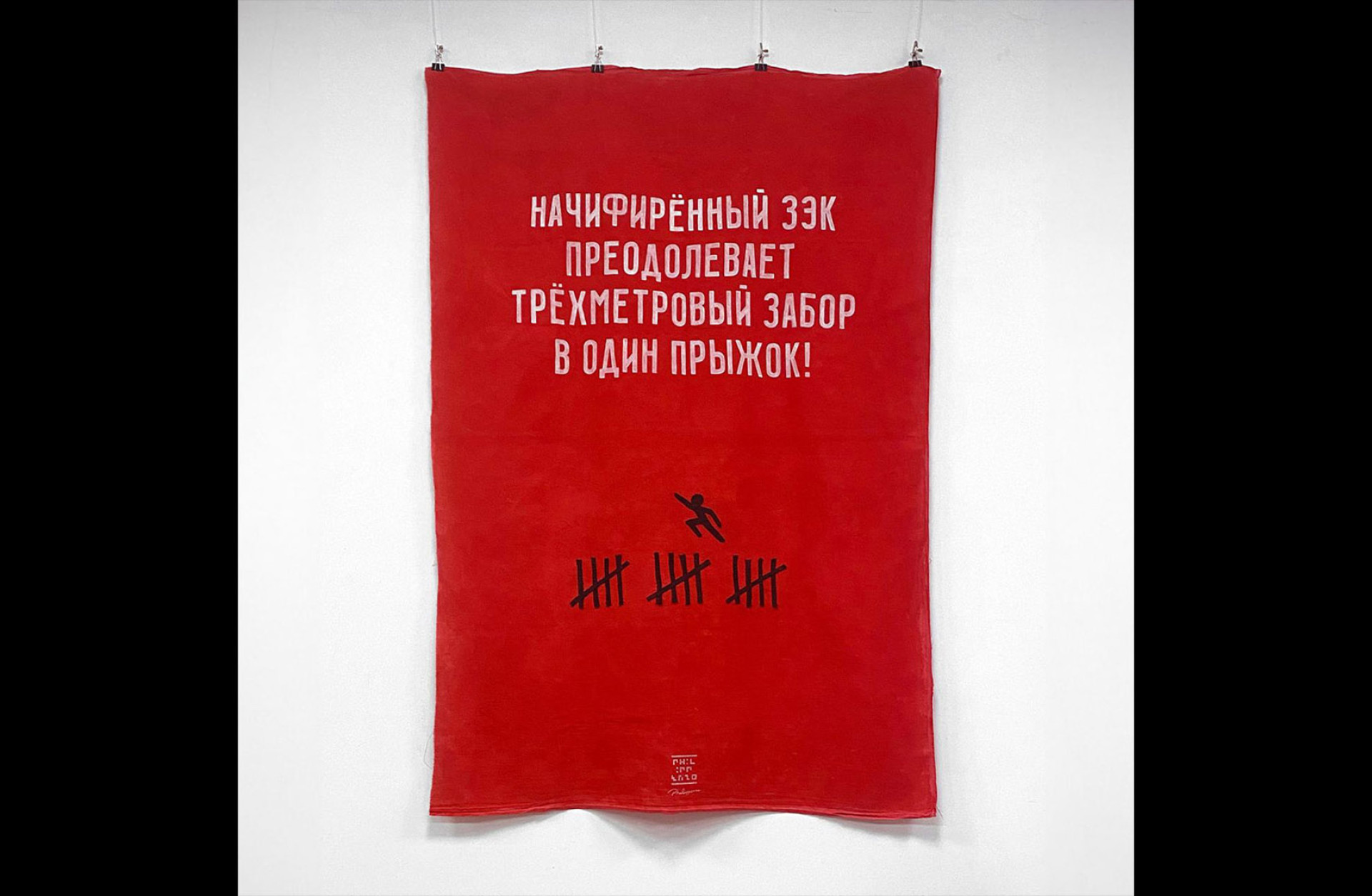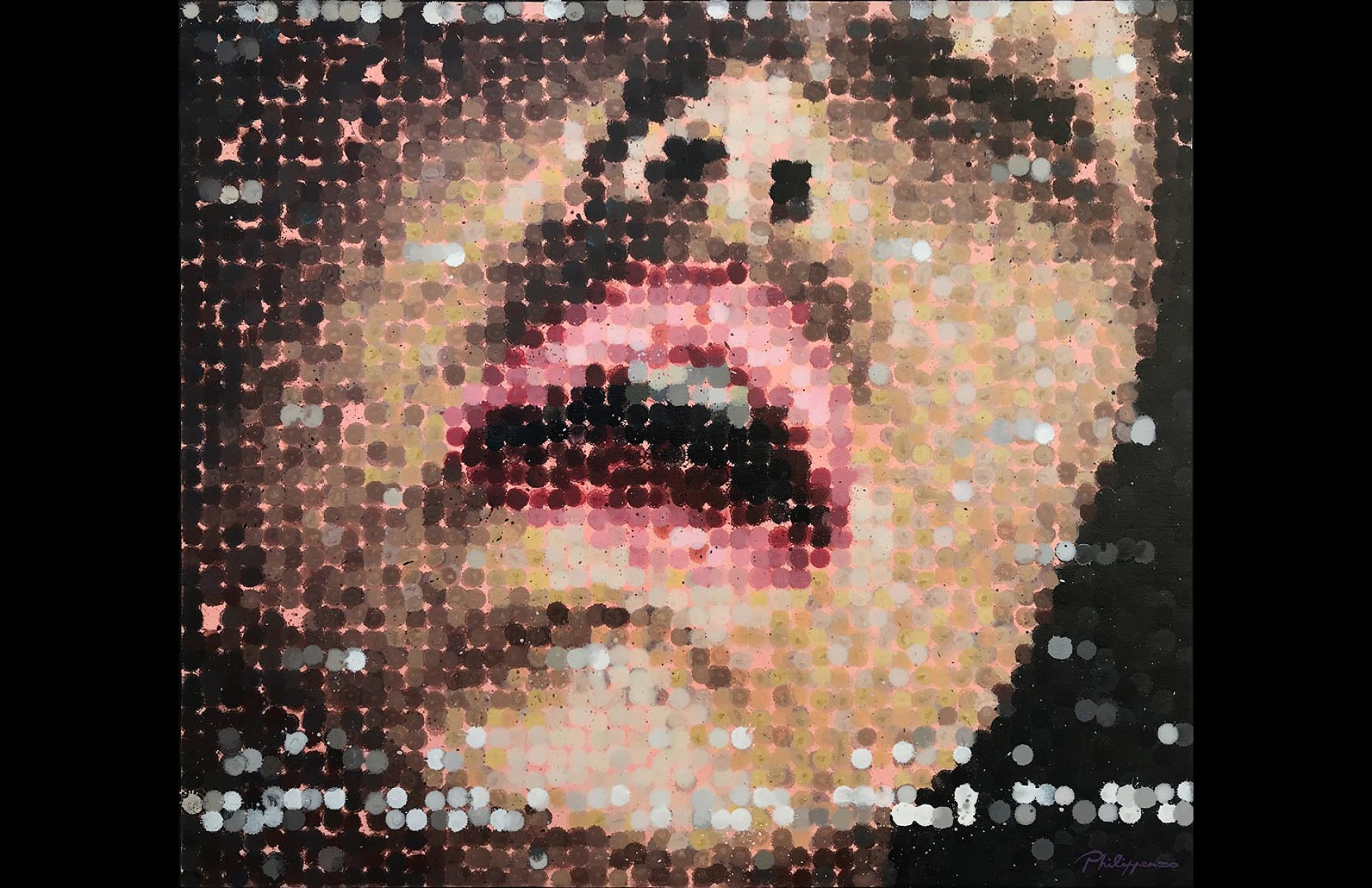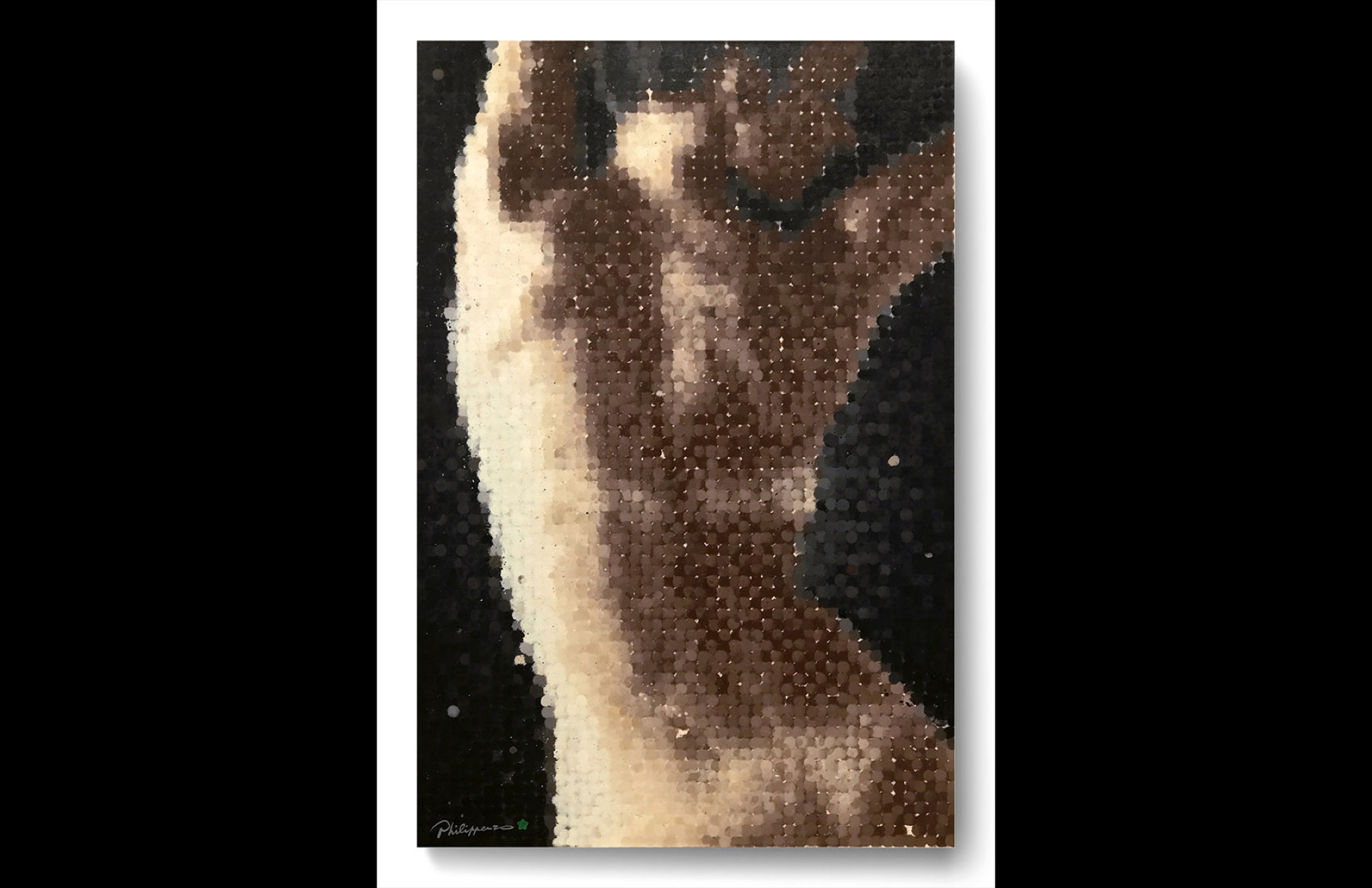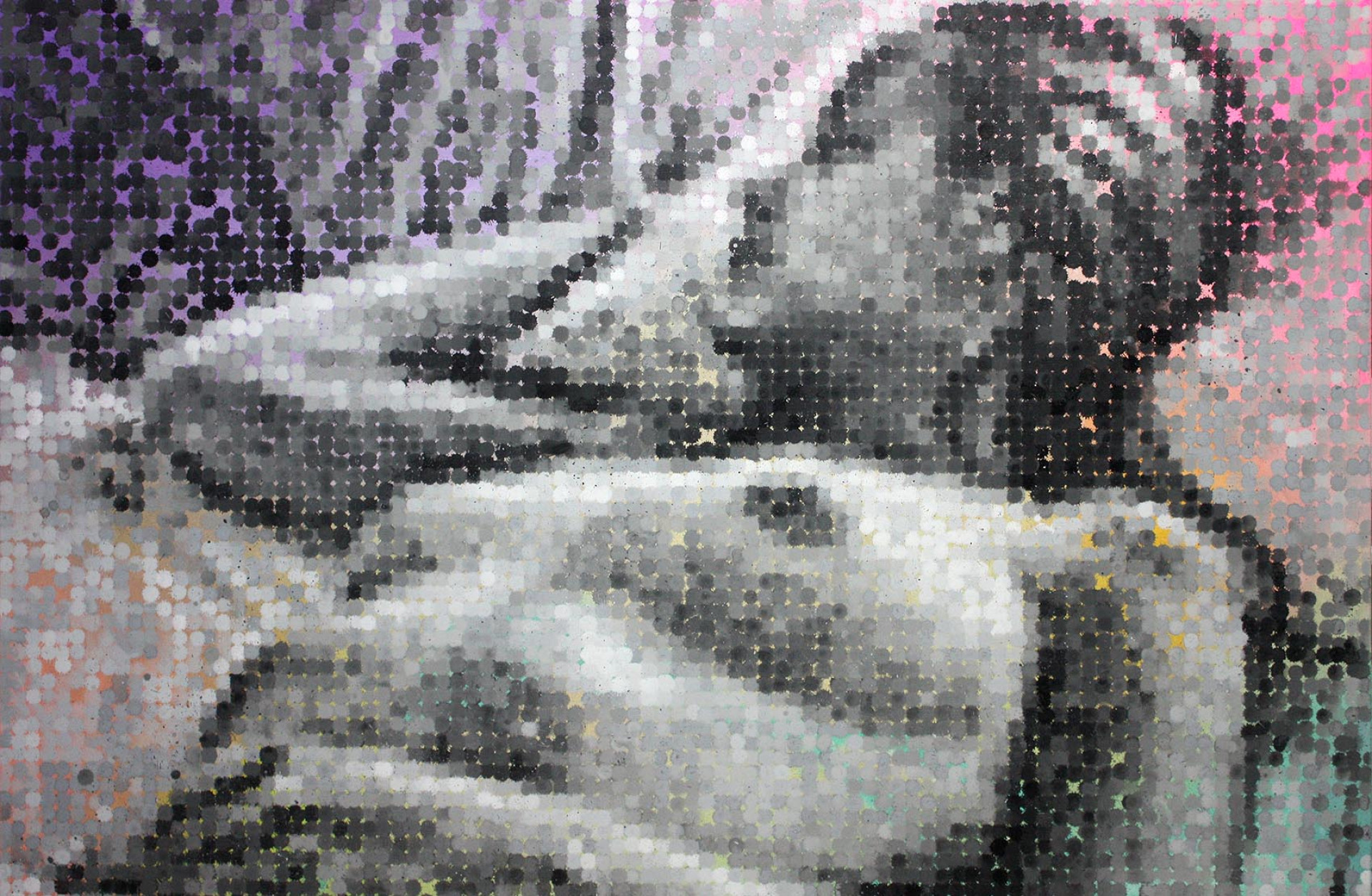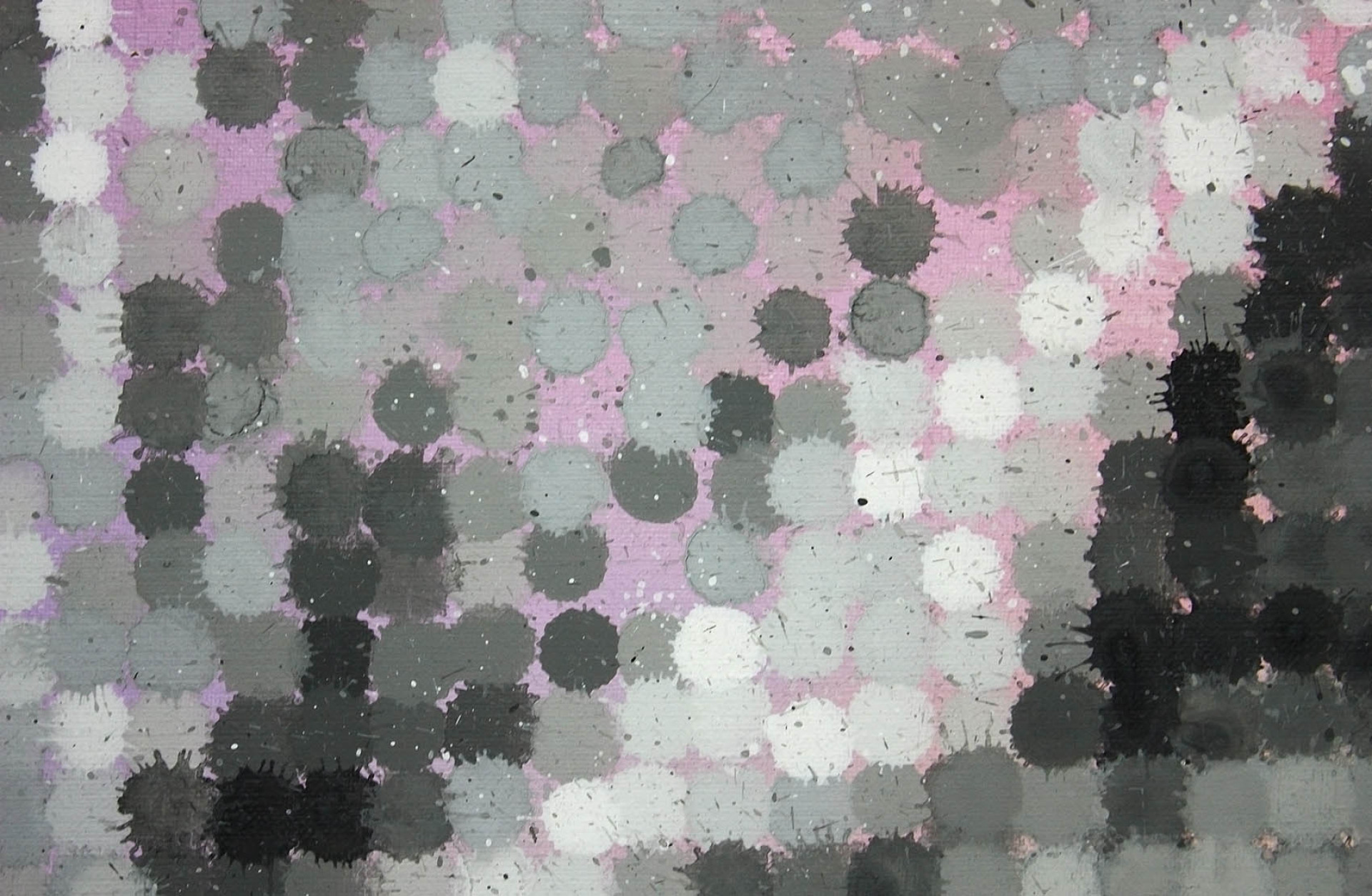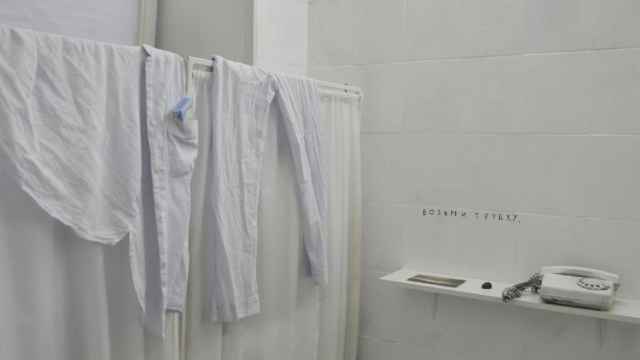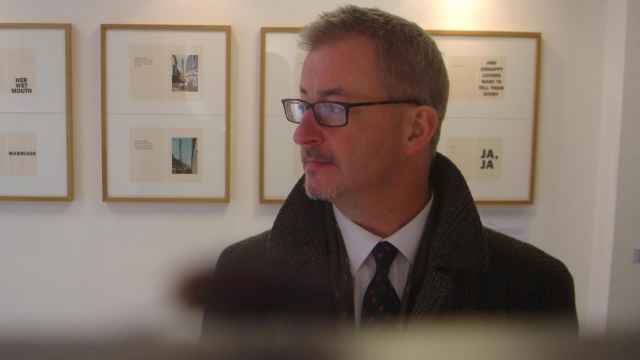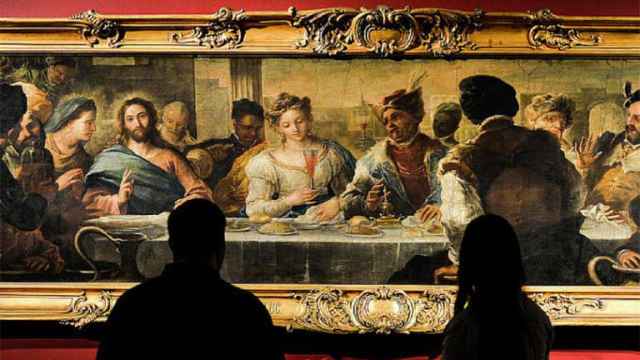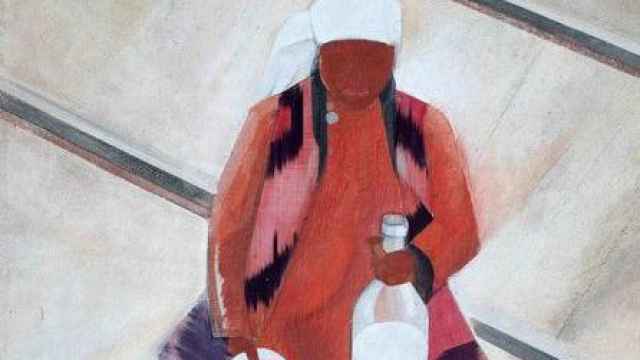Читаете русскую версию здесь.
Artist Philippenzo wants you to refer to him as such — as a pseudonym.
“I don’t like it when the media are like policemen and use passport data that has nothing to do with my art,” he says.
In his home country, Philippenzo is being prosecuted under Article 214.2 of the Russian Criminal Code, “vandalism motivated by political hatred.”
“To be honest, I can’t even object to this, because I really do hate the Putin regime,” says the artist.
The creator of the famous graffiti works “Izrossilovanie” (a combination of the Russian words for “rape” and “Russia”), “Tsink Nash” (“Zinc is Ours,” a reference to the zinc coffins used to transport dead Russian soldiers) and “Swan Lake” (a reference to the 1991 coup attempt against Mikhail Gorbachev, when “Swan Lake” was broadcast on all Soviet TV channels) managed to leave Russia for Europe even though his passport was confiscated.
In July, Philippenzo opened his first solo exhibition in Budva, Montenegro. On Aug. 3 in Amsterdam, Philippenzo will take part in the opening of Artists Against the Kremlin, a major exhibition of anti-war Russian-language art co-organized by The Moscow Times.
MT: Your work “Izrossilovanie,” in my view, is the most striking and clearly articulated expression of what Putin is doing to Russia and what Russia itself is doing to people. How did you come up with this image?
P: Like many of my other iconic works: they simply come as inspiration. In the first year of the war, in the spring or early summer, somehow from within Russia I felt everything that is succinctly expressed in one word.
I kind of wrote it down for myself, but it only turned into a full-fledged work a year later. Because a lot of works, like a child that a woman carries, need time to form, to mature. And apart from the statement itself and all the meanings it carries, the visual form and context are very important. And the location, of course — where it is created. Because ideally, they should be a single orchestra, playing together, reinforcing each other. I understood that I needed to create it on Russia Day precisely, so it would strike a nerve. And just then, I managed to find the right location.
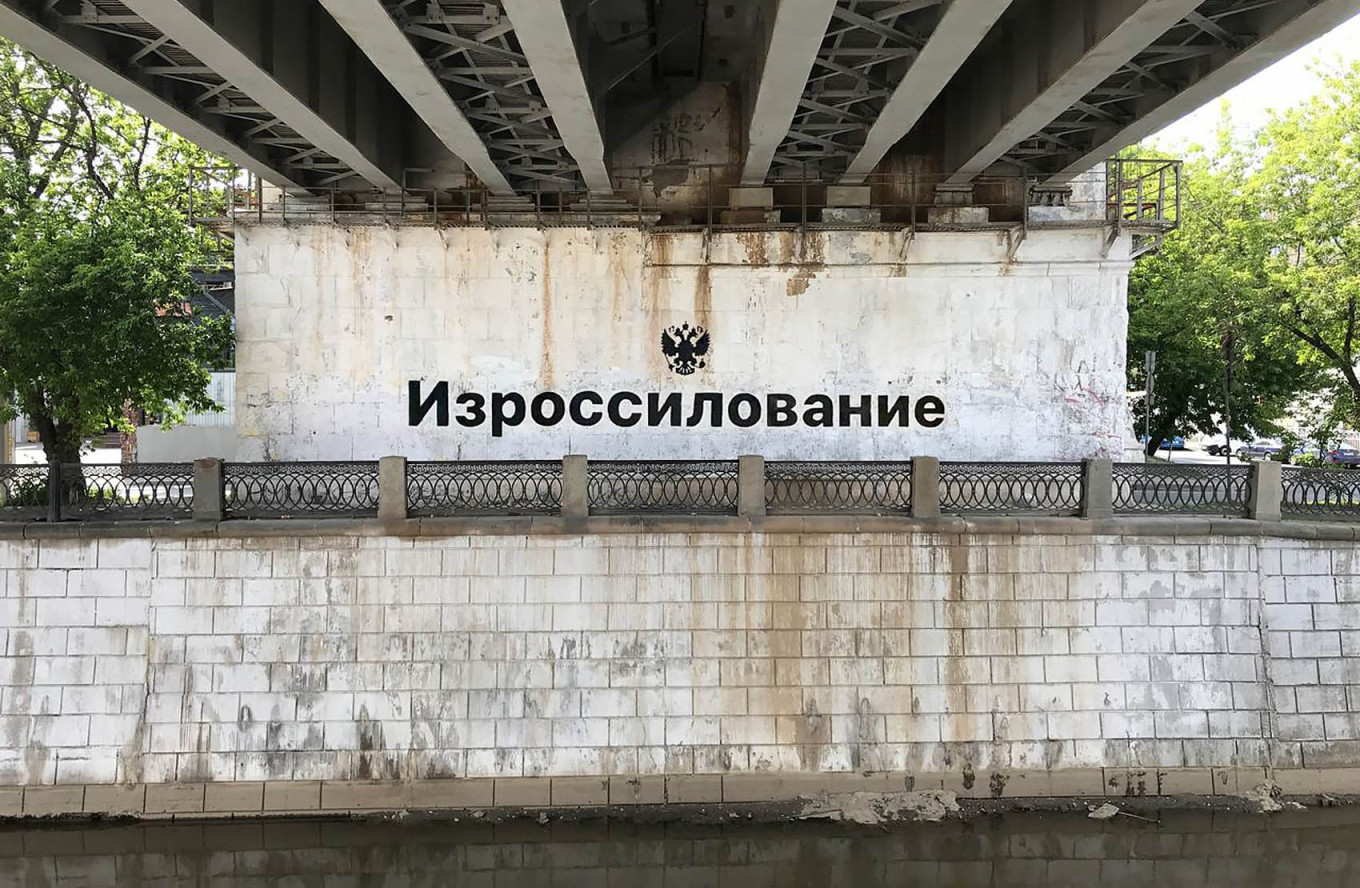
You painted “Izrossilovanie” on the Russia Day holiday, June 12, 2023, under Elektrozavodsky Bridge on the Yauza River embankment in Moscow. This caught the attention of the police, and you left for Georgia. But in July you returned to Moscow and were immediately arrested. You spent a month in a special detention center and then you were released, but your passport was confiscated. And you ended up in Lithuania. It’s a great story — in my opinion, even cooler than Winston Churchill’s escape from captivity during the Second Boer War in 1899. What can you tell us about how you managed to escape from Russia, so as not to frame the people who helped you?
They didn’t [arrest me] right away. They searched my place and confiscated my equipment and my passport as a guarantee that I would come in for questioning. And instead of putting me in a temporary detention center [again], they gave me three days to walk around, which I used to the best of my ability. I was helped by acquaintances and human rights activists who led me by the hand along the long, thorny path of escape.
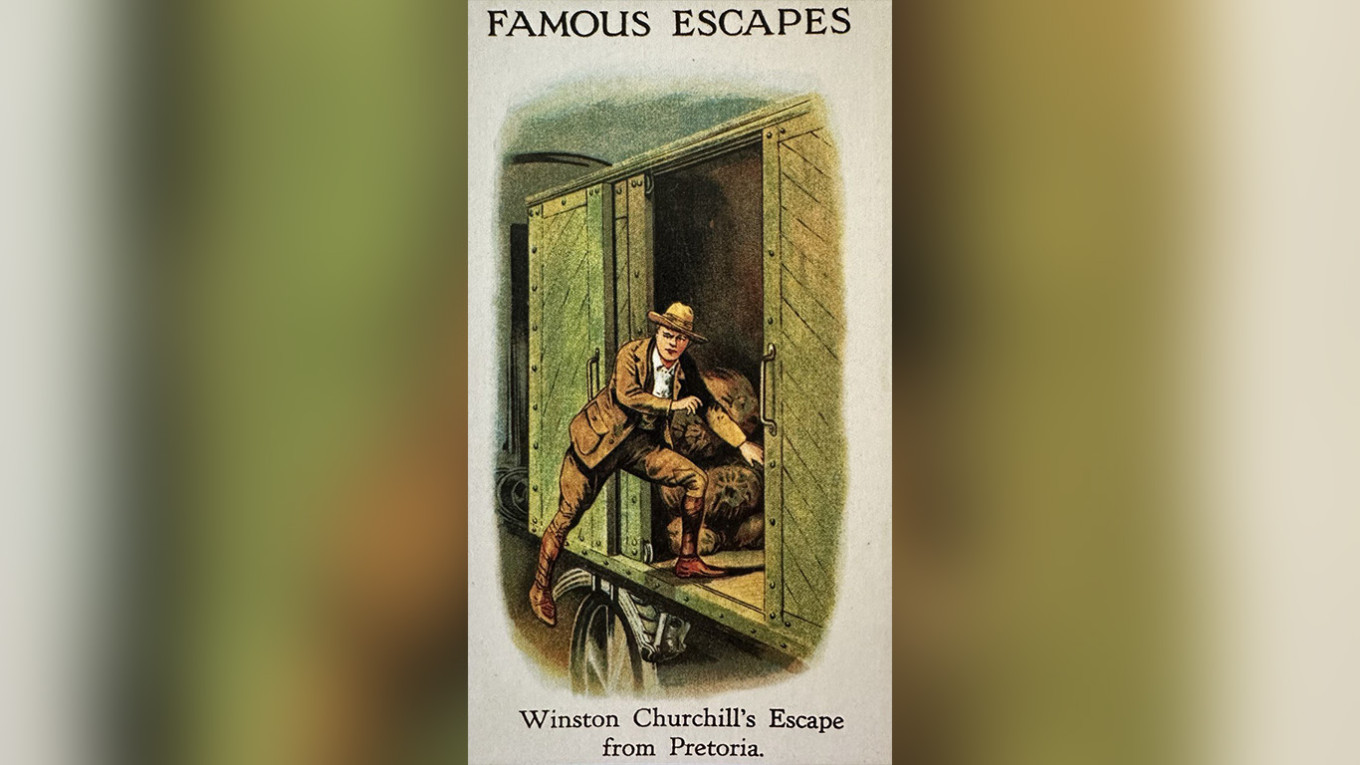
Were you carried across the border, or taken out in a trunk or balloon or something?
Well, no, it didn’t come to such extreme measures. I wasn’t on the wanted list yet. But nevertheless, all safety rules were observed.
Thank God it worked out. In the special detention center in Moscow, you drew on a prison bedsheet: “Caffeinated inmate overcomes a three-meter fence in one jump.” What became of this work, and where is it now?
It’s in the “Interior Ministry Capital-Show Museum” [laughs]. That’s what I call it. It’s just that it, along with some of my other works, were seized during the searches at my studio. So now it is in temporary custody in the “MVD Capital-Show Museum.” I still hope to get it and my other works out of there sooner or later.
What else was seized apart from that?
They confiscated another work that I had also made in the special detention center, named “You're done!” It was also a small banner with a slogan. They confiscated the original work “Twenty,” with Putin with two red crosses over his eyes. [They confiscated] “Number, Seal, Signature” — my conceptual work about the bureaucratic magic of three words, or rather elements, which sees any piece of paper and transforms it into an official document. One of the anti-extremism center employees really wanted to take it away because he said he liked it.
So you think and hope that they are not in someone's dacha or in someone's mansion, but in a special storage facility, among the other evidence?
I don’t care so much where they are now, where they will be all this time. I care about the guarantee of safety, because I only worry about the works of art. I don’t feel sorry for the equipment that was taken, but works of art are unique. Some of them, of course, can be recreated, but some of them cannot be recreated, for example the same bedsheet that I turned into two works. Conceptually, it is a sheet stolen from a state institution.
Did you do this work outside the special detention center or while you were still in there?
I did these two works right there. I also wanted to organize an online auction directly from the special detention center. That would have been the ultimate feat!
Is that even possible, or is it just an oversight on the part of the guards?
In general, my practice shows that it is possible. You just have to be clever and channel the story that happens to you, that unfolds around you, in your own interest. Turn an arrest into a stay in a sanatorium or an art residency. For me it was a kind of art residency, the first in my life. I turned the cell I was sitting in into a creative studio. I had some materials with me from Georgia, some were given to me by friends. What was not forbidden was given without a problem, but to the surprise, of course, of the police officers who worked there. What was forbidden got to me secretly. And I turned part of the entourage of the cell into a work of art, and made my cellmates and police officers the first spectators and critics, even. That is, I resorted to a classic technique taken from Aikido, when you turn the opponent's energy against him and use it for your own purposes. This helped me to survive, not to get bored, and in general to be inspired to do some other works, which I came up with right there during my walks.
What did the first viewers and critics say then?
At first, they didn't believe me when I said, in all seriousness, that I was about to make an awesome work of art, and it would be auctioned off for a very high price. What’s more, I can safely put my notebook with the notes I keep here up for auction, because they also contain a lot of interesting stuff.
And why didn’t you have time to do the auction? Were you released?
No. I assume there are cameras listening, because a video camera hangs in the corner under the ceiling. And it's quite likely that some particularly interesting occupants are being tapped. For example, I was talking to Rita Flores, a member of Pussy Riot, and she shared everyday tips with me about how there are wiretaps there, and they put snitches in with those who are involved in political activism.
They put her, [fellow Pussy Riot member] Masha Alyokhina, and other guys in and bugged them. So I think that whoever was listening just thought that I was a total assh***. And the next day, I think, or the day after, the first anti-extremism officers showed up. They came to seize my equipment, they took my computer, my iPad, my phone. And I was out of contact for a week. And after that, I was sent to another cell, alone, like many political prisoners. In the penal colonies, they also put people away — Navalny, Yashin. I was also transferred, of course, much lighter, but still. This is a measure of influence, they just cut you off from any social ties at all. You are alone, you have no one to talk to, no one to contact during the required 15 minutes, because your equipment has been confiscated, and you have not yet been allowed to hand over the other equipment. So the auction didn't work out, but two cool pieces of art were created nonetheless. Unfortunately, I didn't even have time to take a picture of one of them, as it all happened rather quickly.

Well, at least you managed to do the first one. You said that you hoped these works would survive. But your graffiti was painted over in Russia on the very day you created it. How did you as an artist feel at that moment, because your works did not remain for posterity, but, it turns out, lived only for a day?
I didn’t count on the fact that they would be left to posterity, because given the poignancy of their statement, such works live for hours, or at best a few days if they can’t determine the location. The important thing here is that it survives in photographs. It’s cool when the work manages to be photographed by other people during its short life. More people will see it as a photo on the internet anyway. So, it is not so important how long the original will survive, but how widely copies of it will be distributed, so that many people will know about the existence of such a work, such an idea, and in general such an act.
How long did “Izrossilovanie” live?
“Izrossilovanie” lived for about half a day. I painted it on the eve of Russia Day, and by noon the next day it was already gone.
You are the first and, it seems, the only Russian artist who was able to enter Ukraine after the start of Putin’s full-scale invasion. Did you only produce one work in Ukraine, “Bayu-Bai,” or something else?
Yes, I only managed to do one, although I had several creative ideas. It's just that the first time I went there was quite an interesting trip, I spent a week there. It is quite likely that I will have an opportunity to go again and paint something else, maybe something life-affirming. The ideas are there.
Were you let in easily or was it a complicated diplomatic negotiation?
The diplomatic negotiations were smooth, I guess — at least the part that I saw, that I participated in. And they let me in with an adventure. There was a shift change at the border, and the new shift didn’t know that they had submitted lists of people who should be let in without visas on special invitation. So they took me off the train because I didn’t have a visa. They wanted to send me back to Poland through the border. But then important people called and solved the issue, and I was sent back with thousands of apologies.
By the way, how do you travel without a Russian passport? What document do you have?
I have a Lithuanian passport, which allows me to travel freely in Europe. It is an analog of the Nansen passport, which was issued back in the middle of the 20th century.
You are currently not in Lithuania but at Marat Gelman’s residence in Montenegro. How long have you been there, how long will you stay and what will you create?
Yes, I am in Montenegro now. Marat invited me to take part. I could not refuse because it was interesting. Besides, he also took part in my destiny and helped me with the organization of this trip to Ukraine. So I came here as a tribute and to show my gratitude. My task here is to paint a certain number of pictures in three weeks to form an exhibition, which will be held here in Budva [from July 14 to the end of July].
I'm painting a lot of canvases in the meantime. Something else I've brought with me, in particular a print of “Swan Lake.” And all these works will be in this particular technique, [which] I call “pixel simulacra” to myself. It's a technique that combines a black-and-white pixelated background with graphic multicolored elements on top of it.
It should be an interesting exhibition: there will be a lot of new material, a lot of works will appear at once in a short period of time, whose ideas have been waiting for a very long time for their chance. Some of them for several years.
Will this be your solo exhibition or will there be other participants in the residency as well?
Yes, it’s a solo one. Because each participant here has their own time for an exhibition. The participants come and go overlapping. So one by one, everyone has a final exhibition. And for me, this will be the first solo exhibition that I will participate in.
Congratulations! And after that, you will come to Amsterdam for the Artists Against the Kremlin exhibition.
Yes, but I hope it will be preceded by another very important, big and, I’m sure, high-profile project. I want to believe that it will happen because there is still time between the art residency and the Amsterdam exhibition. Not much, but we have time. Because it also affects what I will exhibit in this Amsterdam exhibition. There are different contenders from my works for this place, for this event, but I want the one that I need to do this project for. So there is one thing clinging to another.
It’s no use to ask you what you'll show in Amsterdam…
Of course it’s no use. Even if I was sure and knew exactly, I wouldn’t tell you anyway, because why break the wow effect?
Why did you agree to participate in this Amsterdam exhibition in the first place?
It's easier to ask, why would I even say no? It’s weird. Why would you ever turn down an exhibition? Especially in Amsterdam. It’s an absolutely stunning location. I’m very happy for the curator of the exhibition that they were lucky enough to agree to hold the exhibition there. I’ve seen the interiors and the facade of the building.
When I look at your work, it seems to me that in peacetime, if things had been different, you could have been not only a wonderful artist, but also a wonderful copywriter. Mayakovsky did advertising, Fellini did advertising. The slogans and phrases that you manage to find — you and Pelevin can argue.
A lot of people think that I come up with these successful succinct expressions, slogans, catchphrases. No, I just feel them. My merit only lies in the fact that I am sensitive to the impulses sent by the Universe, our collective mind, collective feelings. And also that I find some successful forms of decoding those signals and transmitting them to other people. It’s kind of all around us and artists, poets, writers, musicians, other creative people are just more sensitive to these vibrations or these crystals or drops that are hanging in the air. You reach out to them and further mold them into something that decodes these signals.
But isn’t there some annoyance or sadness that the signals, or at least their embodiment, is so sad, not joyful, not good morning, but “Bayu-Bai”?
Well… It’s topical. Contemporary art can only be topical. It reflects reality. And, again, I have not only, as you say, sad things, but there are many other works. It’s wrong to call me an anti-war or political artist. Some works respond to these absolutely sincere personal urges, but they’re not the only ones. There are many other things that inspire me and that I like to realize in the form of artwork. The exhibition in Montenegro only touches a little bit on the topical political theme, because these works are created in the same technique as “Swan Lake.”
Art can and has the right to be not only intelligent but also beautiful and aesthetic. Just pleasing to the eye, pleasing the areas of the brain that are responsible for deriving pleasure from looking at something that evokes delight.
I can’t wait for this moment when I will shoot all my works and will be able to rent a new studio and plunge into the creation of my paintings in the technique of high-dripping. In this, in particular, I really like to paint the aesthetics of the female body, beautifully lit, with the play of light and shadow, so that the shapes and curves are emphasized. In dripping it is particularly interesting. The technique itself is interesting from the conceptual point of view — it is the creation of painting from blotches of paint. And visually it is an aesthetic image of a woman's body, which is at the same time an abstraction with some dynamic moment, when either the picture falls apart into fragments or is assembled from them, that is some vividness. I want to plunge into it, to do it.
Do you think your life is successful at the moment?
And what is the criterion of a successful life?
Your personal outlook.
Well, let’s say it’s in the process of “succeeding.” That’s perfect, because “life has succeeded” sounds like an epilogue.
Well, or failed to.
Which is even worse. It is much more pleasant to be in the process, rather than at the final evaluation point.
Philippenzo’s artwork will be exhibited at “Artists Against the Kremlin,” a showcase of anti-war, anti-authoritarianism art presented by The Moscow Times, All Rights Reversed gallery and De Balie in Amsterdam from Aug. 3 to Sept. 3.
A Message from The Moscow Times:
Dear readers,
We are facing unprecedented challenges. Russia's Prosecutor General's Office has designated The Moscow Times as an "undesirable" organization, criminalizing our work and putting our staff at risk of prosecution. This follows our earlier unjust labeling as a "foreign agent."
These actions are direct attempts to silence independent journalism in Russia. The authorities claim our work "discredits the decisions of the Russian leadership." We see things differently: we strive to provide accurate, unbiased reporting on Russia.
We, the journalists of The Moscow Times, refuse to be silenced. But to continue our work, we need your help.
Your support, no matter how small, makes a world of difference. If you can, please support us monthly starting from just $2. It's quick to set up, and every contribution makes a significant impact.
By supporting The Moscow Times, you're defending open, independent journalism in the face of repression. Thank you for standing with us.
Remind me later.



